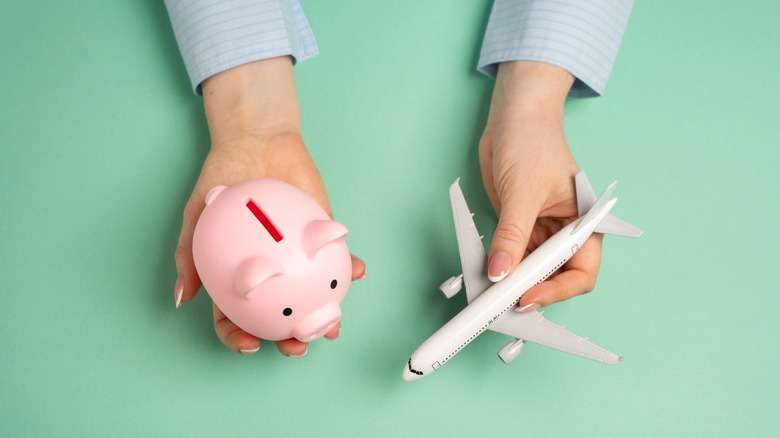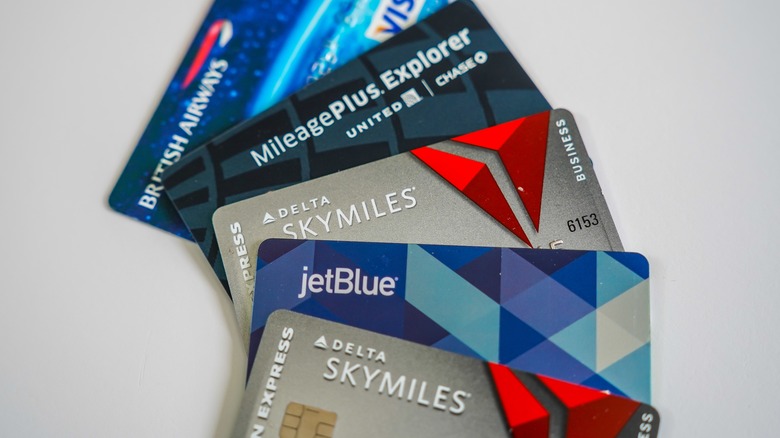Airlines Don't Really Make Their Money Off Flights. Here's Where They Get It
You click "purchase" on yet another flight and moments later, your credit card statement lights up with all the line items: Seat, baggage, taxes, fees. It all adds up — and you didn't even upgrade! You're not imagining that flights are getting more expensive. Post-pandemic demand is still soaring, and despite increased inflation and fuel costs, planes are packed and air travel is setting record highs. It may seem that airlines are making a fortune from passengers alone — but surprisingly, consumer ticket purchases aren't what keep the lights on at most major airlines. It's credit cards.
Savvy travelers constantly debate the best credit cards to use, and co-branded credit cards have become financial powerhouses, generating revenue through annual fees and interchange fees. Many large companies — from Best Buy to Amazon — issue co-branded cards to attract customers who already shop there. Almost every airline now has a co-branded card: Delta partners with American Express, United with Chase, American with Citi, JetBlue with Barclays, and Alaska with Bank of America, just to name a few.
Few financial relationships are as influential — and lucrative for banks and airlines alike — as these airline credit cards. In addition to fees, airlines thrive by selling frequent-flyer miles to banks, which use them as rewards to attract customers — in effect, creating a currency backed by travel. Here's how it works: Banks such as American Express or Chase pay airlines billions of dollars up front to license the airline's brand and buy frequent flyer miles in bulk, typically at a markup. The banks then award those miles to customers, as sign-up bonuses or rewards, to incentivize spending. The cardholders may receive bonus miles for signing up, then continue spending on the credit card.
In modern aviation, loyalty has become a business model
This isn't just good marketing — frequent flyer miles have become currency, and rewards programs now function as valuable collateral. Such miles are now embedded in consumer behavior, particularly since earning miles through airline credit cards is often faster and more convenient than racking them up through flights alone. Predictable, recurring revenue from airline-bank partnerships also attracts lenders, especially in unstable economic times.
In 2004, Delta received $600 million from American Express, including a $500 million pre-purchase of miles — a deal that reportedly saved Delta from bankruptcy for a year. Fast forward to the COVID-19 pandemic, when nobody was buying flights and revenue was shrinking, United, Delta, and American Airlines all collateralized their loyalty programs to stay afloat. For example, United secured a private loan worth $5 billion backed by its loyalty program, MileagePlus, valued at $20 billion.
Delta Airlines recently reported that nearly one-third of its active SkyMiles members now carry the co-branded American Express SkyMiles card. The partnership has proved so lucrative that in 2019, the airline renewed it through 2029. Delta also said that spending on its co-branded cards in 2024 alone represented about 1% of the entire country's GDP — a startling figure. With such economic weight, cardholder data is also influencing route decisions. According to View from the Wing, if more customers in a particular region sign up for the card, airlines see the opportunity to expand the market. In Q3 of 2025, Delta reported $2 billion in revenue from its American Express loyalty program alone, putting it on track for $8 billion for the year. Loyalty may be worth more than mileage, but if mileage can help secure loyalty, it's no wonder credit cards have become so central to airline strategy.

